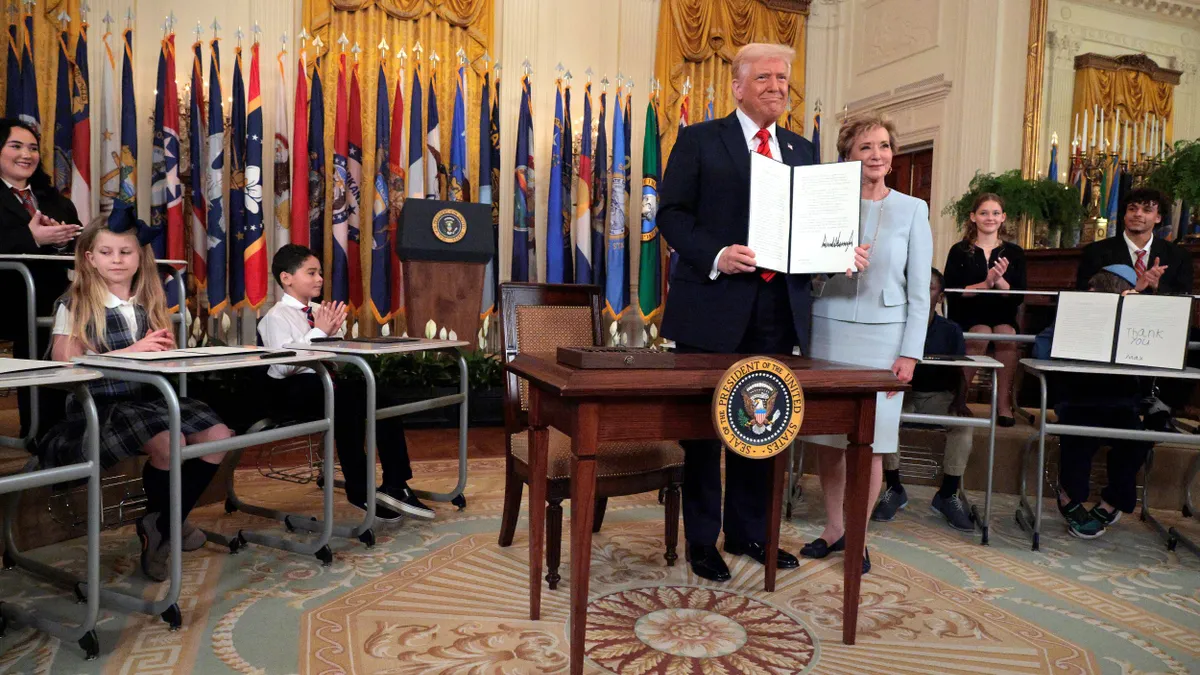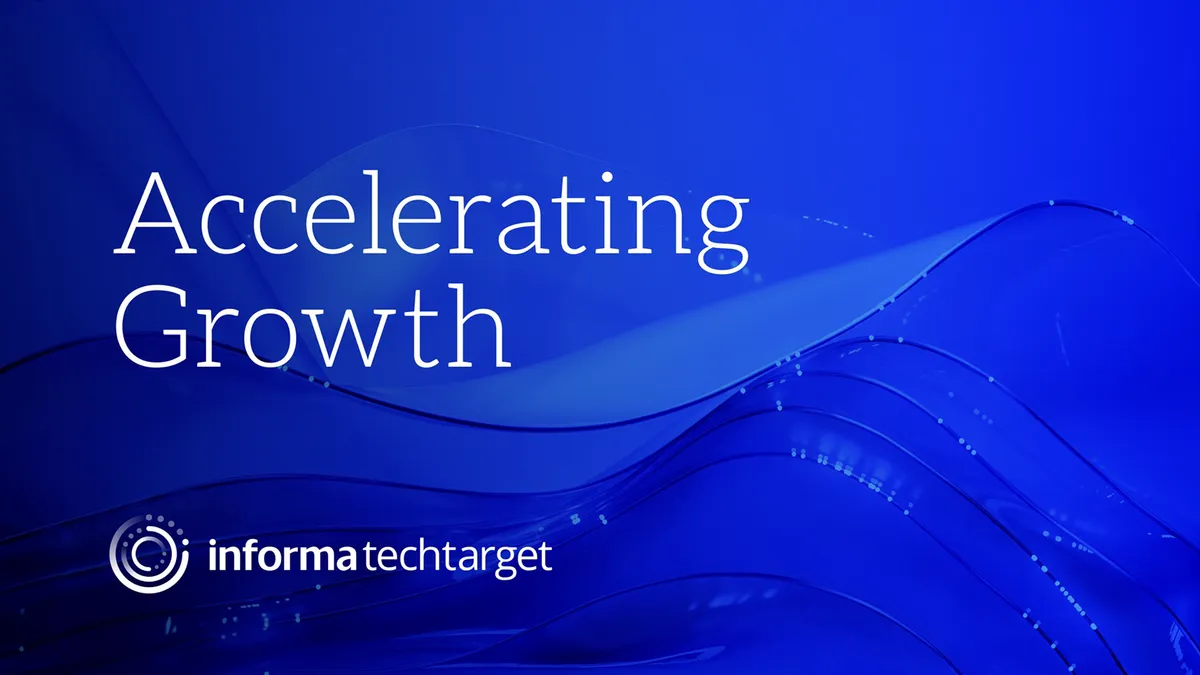Growing interest in microcredentials is raising a host of questions for higher ed leaders: Who is creating them? What topics are most popular? How difficult will it be for an institution to develop its own microcredentials? And maybe the toughest question of all: What are — and what aren't — microcredentials?
Taking the last question first, Kathleen deLaski, founder and president of the nonprofit Education Design Lab (EDL), calls microcredentials a "catchall" term for education that doesn't fit neatly into colleges' history of credit-bearing degrees and majors. Sometimes called badges, they tend to be more narrowly focused than certificates or even single courses.
There are nearly 750,000 "unique credentials" on offer in the U.S. today, including micocredentials and certificates, said Scott Cheney, executive director of Credential Engine, a nonprofit that aims to implement a common schema for credentials and has developed a national registry to track them.
Less than a degree and not a formal license, he said, microcredentials can be offered by a variety of organizations, from IBM to the National Wood Flooring Association, and delivered through a range of postsecondary institutions.
Some of the most popular topics for microcredentials are in technology fields, where much of this activity started, as well as in so-called "soft" skills such as empathy and resilience, deLaski said.
Microcredentials are coming onto the scene as colleges get creative to address projections of enrollment declines in tandem with employers' desire for more qualified workers. "In the next decade, colleges will compete for students at a competency level, not a degree level," she said.
Yet despite its growing popularity, the microcredential market remains in flux.
Employers looking to hire for skills are putting more value on these nondegree signifiers than are colleges or even most students, deLaski said. Schools, however, are moving to catch up, motivated by the opportunity to grow their revenue and to help students see a return on their way to a full degree.
Growing interest
A transcript is itself a collection of credentials, but breaking it down into smaller pieces can more clearly signal a person's skills to the market, said Jonathan Finkelstein, the founder and CEO of Credly, a company that helps create and issue microcredentials. It can also indicate a school's value to students, employers and policymakers, he added.
For students and workers, the ability to showcase discrete skills can help them land their first or their fifth jobs. After all, although a college degree's importance tends to be overshadowed by work experience, credentials can show how a seasoned professional has kept their knowledge current.
In addition to technology-based skills, microcredentials cover the abilities college and business leaders "used to hope were inherent in a general education," Finkelstein said, such as ethics and emotional literacy. "Today people aren't willing to trust those proxies."
For its part, EDL has signed up some 600 colleges to explore and use badges for soft skills such as collaboration and critical thinking. Around 100 are in the process of putting them in place and two dozen already offer them. One institution, Oakwood University, a private, historically black college in Huntsville, Alabama, is piloting a project to award badges for skills learned in on-campus jobs as peer mentors and library assistants.
George Mason University offers another example of how institutions are credentialing soft skills. Developed with EDL, its five-week workshop for students to earn a badge in the attribute of "resilience" blends interactive online and in-person classes that address related skills such as problem-solving and adaptability.
"It's the beginning of a real movement," Finkelstein said. He isn't alone in his optimism for credentials. Earlier this year, Credly raised more than $11 million in venture capital funding. And projections put the digital badge market at more than $205 million by 2023, up from $83 million in 2018.
Building microcredentials
Issuing credentials for work that already occurs in classes is the easiest way for colleges to begin offering microcredentials, Finkelstein said.
The move from teaching a specific technology-based skill, such as machine learning or artificial intelligence, to creating a microcredential to showcase that work can be relatively simple. However, offering credentials for more abstract abilities like critical thinking and teamwork is more complicated, requiring colleges to specify and enumerate skills that could be used over a series of courses.
Colleges should also reexamine the skills and knowledge they "intuitively know are important but are rarely captured on a degree," he said. For example, separately qualifying information literacy and experiences such as study abroad and leadership can give potential employers more specific evidence of a student's skills, he added.
"In the next decade, colleges will compete for students at a competency level, not a degree level."

Kathleen deLaski
Founder and president, Education Design Lab
As another starting point, colleges can look to the knowledge and training that local employers require of their workers as the basis for a microcredential.
Last year, 19 community colleges in the Los Angeles area partnered with Amazon Web Services to develop and implement a cloud computing certificate. Meanwhile, IBM and North Carolina's Wake Technical Community College teamed up to offer badges that indicate students' proficiency with blockchain technology.
On the employer-driven soft skills side, a group of seven colleges and systems is working with local employers and EDL to identify the attributes needed among their workers and develop corresponding digital badges in areas like empathy and oral communication. Employers have pledged to review the resumes of applicants who have at least one badge.
Challenges remain
One potential problem for colleges is that these credentials are often made to quickly fill a workforce gap, necessitating a nimbleness many schools lack. Tenure and expertise around degree-based work can paint administrators in a corner, deLaski said.
But skills learned on the way to an existing English degree, for example, can be identified, qualified and repackaged into a more transparent credential program. "It's a matter of translation," she said.
Quality control is another concern for the rapidly expanding field.
Credential Engine's Cheney said many credentials are of dubious value. While he expects the field to continue to grow, he predicts a "shaking out" of subject matter and providers. Earlier this year, Credential Engine teamed up with six other credential providers to codify existing programs into a common vernacular so badges' value can be universally understood.
The issue of who pays for these credentials also remains murky. Right now, students and some companies foot the bill, though recent federal proposals have called for short-term programs to be eligible for federal aid.
While this new market has yet to mature, Finkelstein and others say it could help diversify the workforce by providing alternative pathways to jobs.
















